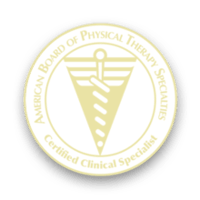What is Physical Therapy For Parkinson’s Disease?
If you have been diagnosed with Parkinson’s Disease, physical therapy should be the FIRST treatment. Now, I know what you are thinking. “That is a pretty bold statement”. Am I really suggesting that physical therapy is MORE effective than medication and/or surgery?? That is correct. First of all, If you are in the early stages, your doctor might not be ready to start medication. And surgery? (Yes, there are a few treatments that involve surgery). I don’t know about you, but if there is another way, sign me up ??♀️
And therefore, all things considered, your treatment plan MUST include physical therapy.
But before we dive into physical therapy treatment (aka: how much I absolutely LOVE what I do ??♀️), it is important to know the “why”. In other words, why do you have pain, stiffness, and difficulty walking?
What is Parkinson’s Disease?
Parkinson’s disease is when neurons in the brain (that produce the neurotransmitter, dopamine) die. Neurotransmitters are chemicals that allow nerves in the brain to communicate with one another. These brain chemicals are important. They are responsible for controlling body movement, thinking, making decisions, and stabilizing mood/behaviors.
What are the symptoms of Parkinson’s Disease?
Symptoms are very subtle at first and may go unnoticed for several years before an official diagnosis. This may include:
A subtle tremor – In one hand, one leg, or jaw.
A dull back ache – This is problematic because many may go years “chalking this up” to an orthopedic injury.
As the disease progresses, symptoms become more noticeable. Such as:
SYMPTOM
WHAT DOES THIS LOOK or FEEL LIKE?
- Walking with small steps or catching your foot on the ground
- Small arm swing or no arm swing when walking
- A quiet or soft voice
- Handwriting starts to get smaller
- Daily activities, such as dressing, eating, and grooming, take longer
- You fatigue quickly when doing normal daily activities
- Feet feel like they are stuck to the ground
- You get “stuck” when attempting to take a turn step, or step through a doorway
- Head and neck start to bend forward
- The chest and trunk start to flex forward
- It becomes harder to correct a forward bent posture in standing
- Shoes start to feel heavier when walking
Is Physical Therapy the BEST treatment for Parkinson’s disease?
Parkinsons disease affects every person differently. Hence, each person will experience a different combination of symptoms. Although this may be true, there is one common theme. Movement is a MAJOR problem. Furthermore, the (movement-related) symptoms are one of the leading causes of disability.
Now, I might be a little biased. (that is to say, I am a physical therapist 😊), but hear me out. As stated above, Parkinson’s Disease is, namely, a movement disorder. And as you may know, even the most minor symptoms can cause pain, fatigue, fear of falling, and loss of independence.
With this in mind, physical therapists are trained in the movement sciences. In fact (as a licensed professional), we are the experts in:
- Soft tissue (muscles, and ligament, and tendons) mobilization – minimizing the impact of muscle rigidity on movement
- High amplitude movement retraining – a proven method to decrease/minimize shuffling feet, small handwriting, and other manifestations of hypokinetic movement
- Balance retraining – proven techniques to decrease the frequency and severity of falls
- Lifestyle coaching
- Science-based techniques to minimize “freezing” episodes
- Pain management
All in all, we know how to restore and maintain how the body moves. Given these points, physical therapy is critical to prevent the progression of the movement-related symptoms (as the disease progresses). So, it should be clear that:
Physical therapy is an essential part of the treatment for Parkinson’s Disease.
Following a diagnosis of Parkinson’s Disease, a physical therapist will conduct a thorough evaluation. We will evaluate your posture, flexibility, gait (walking), balance, and coordination. Here (at Orlando Neuro Therapy), I spend time getting to know you on a personal level. I learn about what you enjoy and what activities bring the most meaning to your life. In other words, if it is important to you, it is important to me. We will then look at the result of the evaluation, and decide how these findings are impacting your life. And finally, set up a focused treatment plan specific to YOU!
What is Physical Therapy treatment?
Your Parkinsons Disease treatment program may include:
- Improving your overall fitness level, strength, and flexibility
- Repetitive practice improving the size of arm and leg movement
- Rhythmic movement retraining
- Gait (walking) training focused on lifting the feet and standing up taller
- Posture retraining and strategies to prevent falls
- Getting in and out of a car
- Climbing stairs
- Agility training
- Getting up from a chair
- Pain management – this may include a combination of stretching, relaxation strategies, and some lifestyle modifications
- Hand and arm movements focused on smoothness and coordination
- Dual Task Training – multiple activities at the same time
- Strategies to improve rolling in bed
- Perform activities that are important to YOU!









